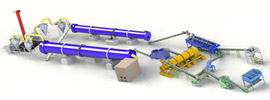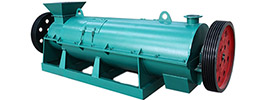Different IngredientsNitrate and sulfur-based
compound fertilizer: contains nitrate nitrogen, which can be directly absorbed by crops.
Sulfur-based compound fertilizer: contains low chloride ions, less than 3% according to national standards, and contains a large amount of sulfur, which can effectively improve soil sulfur deficiency symptoms.
Chlorine-based compound fertilizer: contains a large amount of chlorine elements, which has adverse effects on chlorine-sensitive crops.
Urea-based compound fertilizer: nitrogen for urea (amide state nitrogen), urea in the soil by the action of soil microbial secretion of urease, hydrolysis into ammonium carbonate or ammonium bicarbonate, when the moisture is appropriate, the higher the temperature, the faster the hydrolysis, the faster the rate of conversion into ammonium carbonate, the faster the fertilizer effect, ammonium carbonate is very unstable, so the application of urea-based compound fertilizer, should be applied deeply to cover the soil to prevent nitrogen loss.
Process is DifferentNitro-sulfur-based compound fertilizer: contains a
mixture of nitrate and sulfate of nitrogen, phosphorus and potassium, raw materials using high-quality nitrate of phosphate fertilizer and potassium sulfate, with high nitrogen and high potassium, reasonable formula, good solubility, rapid fertilization, favorable absorption of phosphorus, potassium and other nutrients, high fertilizer utilization, avoid or reduce the accumulation of nitrite in plants, is a high-quality and efficient, green, pollution-free new compound fertilizer.
Sulfur-based compound fertilizer: the chloride ion content is extremely low, and the chloride ion is removed during the production process.
Chlorine-based compound fertilizer: the chlorine ions, which are harmful to chlorine-averse crops, are not removed during the production process, so the product contains a large amount of chlorine elements.
Urea-based compound fertilizer: The molten urine made from urea or the molten urine made from solid urea heated during the production process is prepared with potassium chloride or potassium sulfate to form a slurry.
Different Scope of ApplicationNitrate and sulfur-based compound fertilizer: suitable for dryland crops, especially for sulfur-loving and chloride-abstaining crops or sulfur-free and saline alkaline soils, without residual pollution, as a base or chasing fertilizer, which can meet the nutrient requirements of crops in different reproductive periods.
Sulfur-based compound fertilizer: suitable for all kinds of soils and all kinds of crops, and can effectively improve the appearance and quality of all kinds of economic crops, and can significantly improve the grade of agricultural products.
Chlorine-based compound fertilizer: It has adverse effects on the yield and quality of chlorine-sensitive crops and seriously reduces the economic benefits of such cash crops.
Urea-based compound fertilizer: it is easy to produce diurea in the production process, and should be isolated from seed fertilizer when used as seed fertilizer.
Different Fertilizer EffectNitrate and sulfur-based compound fertilizer: compared with other traditional compound fertilizers, high nitrogen and high potassium, reasonable formula, good solubility, rapid fertilization, favorable absorption of phosphorus, potassium and other nutrients, high fertilizer utilization.
Sulfur-based compound fertilizer: sulfur is the fourth major nutrient element after nitrogen, phosphorus and potassium, which can effectively improve the lack of sulfur in the soil and provide sulfur directly to crops.
Chlorine-based compound fertilizer: the formation of a large number of chlorine ion residues in the soil, easy to cause soil caking, salinization, alkalization and other undesirable phenomena, thus deteriorating the soil environment to reduce the nutrient absorption capacity of crops, but chlorine ions have to promote photosynthesis and fiber formation and other functions, especially suitable for hemp and other fiber crops.
Urea-based compound fertilizer: the nitrogen in the fertilizer applied to the soil needs to be converted into ammonium nitrogen and nitrate nitrogen before the plant can absorb it, so it should be applied earlier in the application process in areas with lower temperatures.
Different Application MethodsNitrate-sulfur-based compound fertilizer: it can be used as a base or chasing fertilizer, which can meet the nutrient demand of crops in different reproductive periods.
Sulfur-based compound fertilizer: can be used as base fertilizer, chasing fertilizer, seed fertilizer and extra-root chasing fertilizer.
Chlorine-based compound fertilizer: can be used as base fertilizer and chasing fertilizer, and when using base fertilizer and seed fertilizer, it is appropriate to use with organic fertilizer and phosphate mineral powder on neutral soil.
Urea-based compound fertilizer: because it contains diurea, in the process of application, attention should be paid to the burning of seedlings, while the application of deep application of mulch to prevent the loss of ammonia. The specific scope of application of urine-based compound fertilizer depends on whether the fertilizer contains chloride ions or sulfur elements, such as containing chloride ions, the scope of application in accordance with chlorine-based compound fertilizer, containing sulfur elements, the scope of application in accordance with the scope of application of sulfur-based compound fertilizer.
 Send us a Email
Send us a Email Wulong Industrial Cluster
Wulong Industrial Cluster Have any question?
Have any question?



















